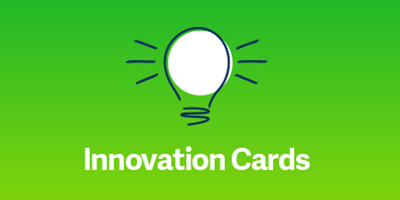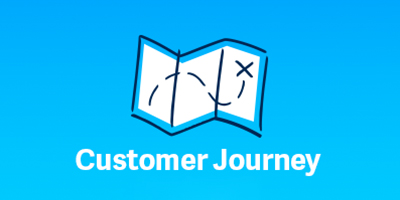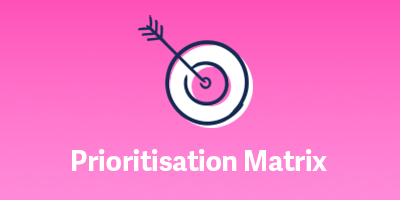Take outs:
- Each business in the wealth management industry should have a customer journey map
- These differ across a range of advice firms, but there are some uniform tips that can help you map the journey and improve the experience
In 2018, your customers no longer rate you against other financial planners or the banks, but against companies that are masters of customer engagement.
Whether they are ordering a pizza from Domino’s, buying a movie on Netflix or getting consumer credit through Afterpay, customers now expect every experience to be user-friendly, friction-free and intuitive because this has become the new normal.
If you are competing against the world’s customer experience experts, then how can you match them? A starting point is to understand the customer journey of your typical advice customer and identify touchpoints and points of pain in that journey, with a view to fix and innovate against those.
Let’s consider a high level customer journey for a financial advice customer, typically it will involve the following ‘journey’ steps.
Prospect
When people have financial needs or problems, this is the beginning of their journey to seek out advice. Some of the touch points at this stage could include a referral partner, advice from a friend, your website, a phone call, Google, social media, online directories or meetings (in-person or virtual).
This is where first impressions are critical. Google yourself (you know you want to) and see what kind of impression you are making. Some of the pain points customers may experience can include feeling overwhelmed with too much information, perceiving your business lack credibility due to a poor looking website, finding it hard to find time for an appointment and finally, a reluctance or anxiety to take the next step.
Discovery
This step involves the collection of information and data about the person. This can be through the use of online tools, risk questionnaires, calculators, budgets and the collection of bank statements, as well as old-fashioned methods like face-to-face meetings. The main pain point to note here is that the customer can easily become overwhelmed. Collating data can lead to frustration, as can asking for sensitive data.
Advice
The core of your business. This is where you share your recommendations with your clients through the statement of advice (SOA) document and presentations. These presentations need to have all the relevant information but also be easily digested by the client. Areas of friction or pain points are often through the use of jargon and excess legal speak, and a lack of clarity in linking the person’s objectives with the advice strategy.
Implementation
This is the point where the customer signs off on documents to accept your strategies. These forms can include execution documents (account application forms, rollover forms and insurance documentation. Pain points at this step can include documents that require more than one person to sign and incomplete documents leading to rework. Even printing is hard for many as they often don’t have a printer at home.
Engagement and education
Ongoing communication is vital with your clients and this can be achieved through client portals, reports and dashboards, meetings, educational content and calculators. While this ongoing flow of information provides value to your clients, there are pain points which can include the client not understanding the status of the strategy, not understanding what certain events will mean for them, feeling forgotten if they haven't heard from you in a while.
Annual or periodic reviews
This step is similar to the discovery process again where you are looking to freshen up your understanding of the customers objectives, information and data. As such similar pain points exist as already mentioned.
End of financial year
EOFY is a critical time for your clients and they will need statements, advice and information to be properly prepared. There will be face-to-face meetings during this process and the actual lodging of the tax return and audit of SMSFs. The pain points here may include the many confusing documents that need to be signed by multiple people.
Customer Journey Map Workshop
Exercises and activities to help you see your customer journeys in a different light
Map your customer journey map and innovate
Every business is different, so it is important to map your own clients. Having this in-depth understanding of your customer’s experience is vital step to growing your business.
Simple techniques exist to map your customers unique journey with your business. At Netwealth we have developed a Customer Journey Mapping workshop as part of our Innovation Toolkit for this purpose.
Using a customer journey map approach you will be able to analyse the journey to ensure your customers are getting optimum engagement at all their interactions and touchpoints with your business.
By identifying the pains and joys customers have at different touchpoints, your firm can make the customer experience smooth and memorable, encouraging repeat business and positive word of mouth promotion.
This will enable your business to be nimble and ready to meet all challenges along the customer journey to create an evolving strategy for improving engagement at all times, in turn delivering greater customer satisfaction and perhaps improved profitability.
To create your own customer journey map unique to your business, download the Netwealth Innovation Toolkit Customer Journey Map Workshop.
Additional resources and tools
Download a deck of 35 bite-sized innovation challenges for you and your team to use to unleash its inner creative genius.
Use this workshop to identify the pain points in your customer’s experience with you and develop innovation solutions to address them.
Get your team together for 60 minutes to have some fun and identify some quick wins to remove customer friction in your business.
When you have lots of ideas how do you prioritise them? Using this simple tool you can, by plotting them on our 2x2 prioritisation matrix.




